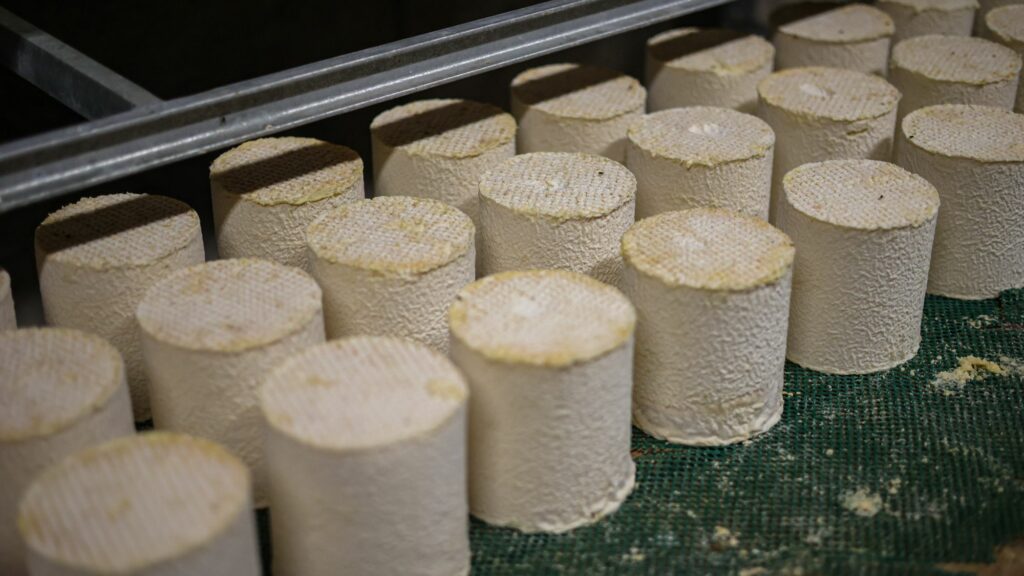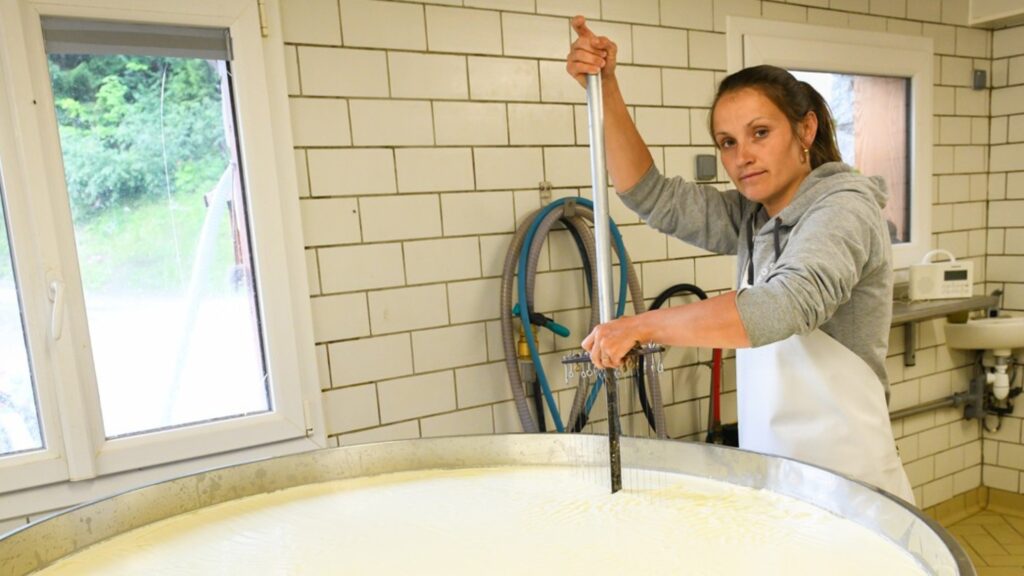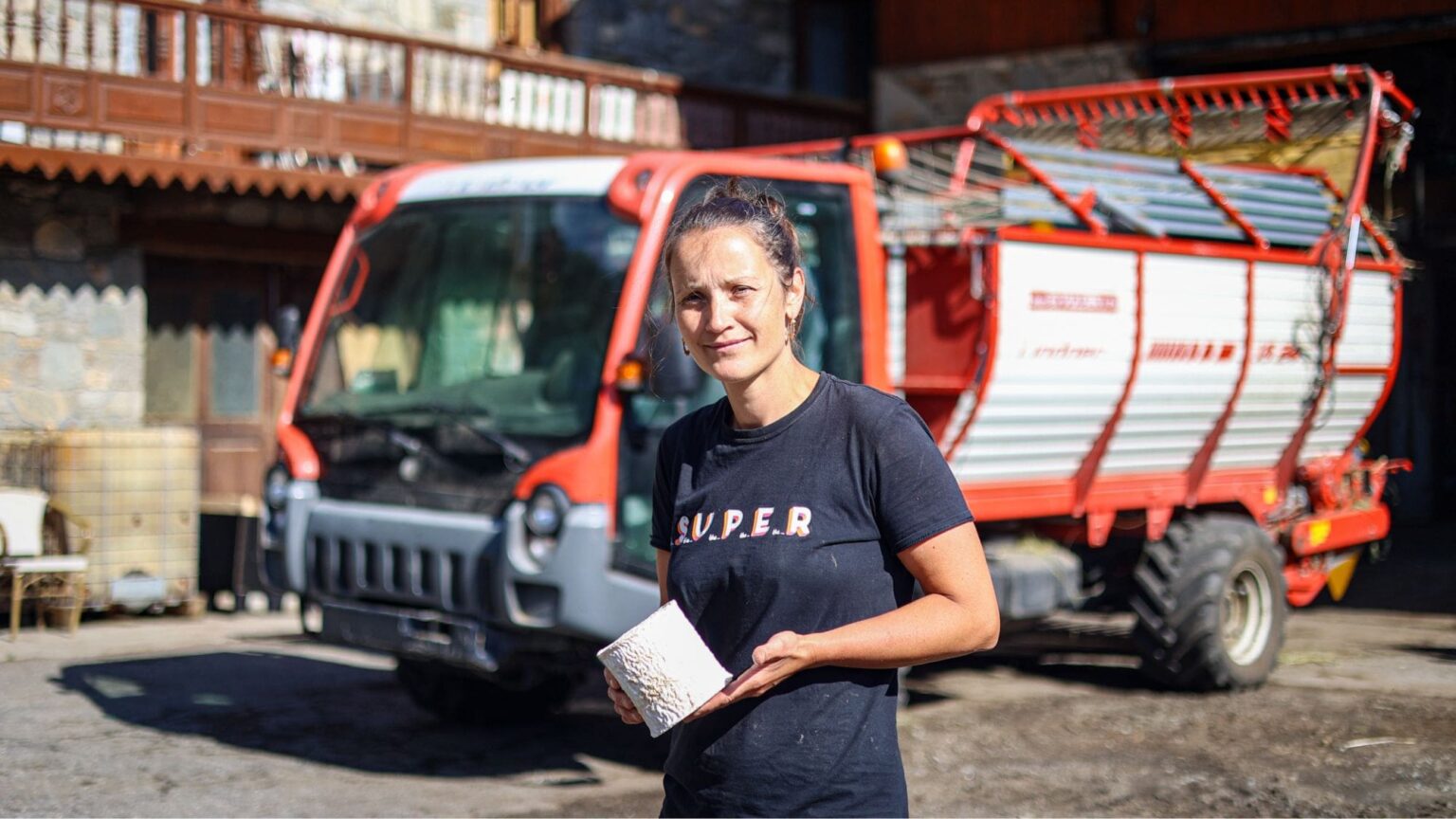At the foot of the Villaroger forests, on the slopes facing Tignes and Saint-Foy, Anémone Marmottan swapped her professional ski bib for a farmer's smock a few years ago. Here's a report.
On the family farm, founded by her grandparents and rebuilt by her mother in the 1990s, she and her brother carry on an ancestral tradition: making Persillé de Tignes, a unique cheese made from a blend of cow's and goat's milk that bears witness to a part of Alpine history that has now disappeared.
- READ OUR DOSSIER - "Tignes, the sports resort par excellence".
"When you're born on a farm, you quickly get your foot in the door". smiles Anémone. As a child, she already helped out with the animals and the cheese dairy, before leaving to pursue her career as a top-level sportswoman.
But going back to our roots was an obvious choice. "I wanted to give my children this link with nature, with a simple, real everyday life, even if it's not always easy.
Charlemagne loved the marbled cheese from Tignes
The estate, perched at an altitude of 1,600 metres, is divided between pastures for the cows, which graze on the more accessible terrain, and steep slopes where only the goats can squeeze through.
Twice a day, in summer and winter, milking punctuates the day. In winter, the animals stay sheltered within the farm walls; in summer, they head off to the mountain pastures, covering up to 150 hectares under the watchful eye of the family.

Persillé de Tignes, which Anémone and her family are the only ones to make today, has its roots in "old Tignes", which sank in the 1950s. during the construction of the Chevril dam.
"At the time, the locals sold their produce directly to Tignes.she says. The milk was mixed naturally: the cows in the meadows, the goats and sheep on the steep slopes, and in the evening it was all put together in the same cauldron".
It's a tradition that's in danger of disappearing, but one that she's determined to keep alive. According to local legend, Charlemagne himself tasted the cheese and asked for it to be brought to his court in Aachen. Archives even mention tonnages being exported abroad.
in memory of the sunken village
Today, the farm works with ripeners as well as with Maison Bouvier, the benchmark for Alpine gastronomywhich promotes this local treasure in its restaurants and delicatessen.
"They regularly come to the farm with their teams to see where the product comes from. It's important that people understand all the work that goes into each wheel. insists Anémone.

The former skier, who grew up following in the footsteps of her mother and brother, is pursuing this farming adventure with the same determination as on the slopes.
Between milking and caring for the animals, she is one of the few guardians of a unique cheese heritage, intimately linked to the history and wounds of the region.
Because behind every piece of Persillé de Tignes lies the memory of a village swallowed up, families uprooted and a valley marked by exodus. "It's still an open woundshe admits. But through this cheese, we maintain a link with our past.

